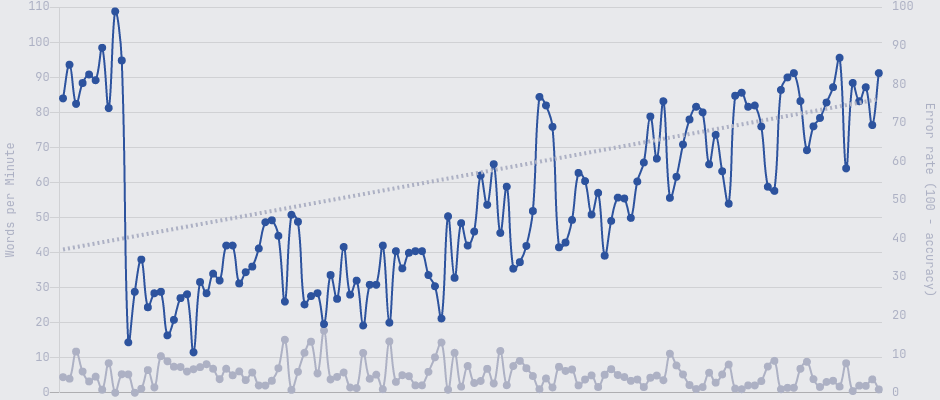
October 29, 2021
My Vortex Race 3 mechanical keyboard has been in nearly daily use since fall of 2017 and it’s been an absolute blast! The profile of the DSA keycaps, the layout, and the impressive build quality (weighs a figurative ton) has kept me loyal solely to it. But, and there’s always a “but”, around half a year ago I started noticing an increase in the amount of fatigue and pain I feel in my left wrist during longer bouts of sustained typing, both when programming and just writing.
At first I just shrugged it off as a coincidence that probably happened on the days when my workout had been more taxing on the forearms, but when it became more frequent I had to face the truth that at last my profession has started to have some physical negative effects; something I haven’t observed before.
In researching a new keyboard I quickly came to the conclusion that a split keyboard and one that preferably allows for tenting (setting each side at an angle that decreases the pronation of the wrist) would be the way to go. While I’ve always had a soft spot for keyboards, split keyboards themselves have always seemed more of a novelty than anything else. So, after four years with a “normal” keyboard, I ordered the ZSA Moonlander Mark I.
Not only is the Moonlander split, it’s also ortholinear, which is a fancy way of saying that instead of the keys being staggered as they are with 99% of keyboards they are aligned in neat columns with every key being either directly above or below another key, thus reducing the amount of travel every finger has to do to reach a given key. Go ahead, look at your own keyboard and notice how none of the main keys align with each other. While researching split keyboards I got to try the Microsoft Sculpt keyboard from a colleague and while it was a bit jarring at first as I noticed that my fingers aren’t moving optimally, meaning that, for example, my right hand was the one pressing the B key when instead the left would be better placed to do so, it was still fairly easy to get used to as the same staggered layout was there. As I soon discovered that was not the case with the Moonlander…
Going from staggered to ortholinear was a massive leap for me, one evidenced by the fact that my words-per-minute went from about 100 to about 17 on the very first day I started this odd endeavor. There’s also a weird phenomenon in having one’s typing speed reduced by such a large factor: thoughts that I was previously able to pretty much type as fast I had them pop into my head now started to cause some sort of blockage in my short term memory. It might not sound like a big deal just going slower as the end result should still be the same, but that was not what I observed.
Being so damn slow meant that my thoughts were forced to wait until I could physically catch up, but by the time I caught up I had new thoughts and the previous ones had been lost to the ether causing seemingly endless amounts of frustration. Jamie Brandon has echoed the same thoughts when talking about mental load. This extended especially to programming as none of the special characters required were known to me due the keyboard being of a different layout and having to customize everything myself. All of this meant that I had to take on tasks that included little to no coding and with very small amounts of writing in general; essentially just outlining things with keywords.
I was expecting this kind of slog for months, but I’m happy to report that even after two weeks my words-per-minute was at an acceptable 80! Here’s a graph showing my progress from Monkeytype to date (a month later by now):

It’s a far cry from the proficiency I had before, especially in programming where I still struggle to hit the right keys, but the progress has been far quicker than I had imagined. In terms of the main reason I bought the keyboard, the wrist strain, it’s still early to tell whether improvement has occurred because while I could type relatively fast before for long periods, I am not able to do so yet and am thus unlikely to feel any strain whatsoever.
A common concern I’ve heard about switching to a split keyboard is that, and an ortholinear one at that, is that the ability to type on a normal keyboard will decrease significantly, but that’s not something that I’ve observed. I don’t have the Monkeytype data to back this up at the moment. Sure, there is the occasional mistype that probably wouldn’t have happened if not for the change, but otherwise nothing to really fuss about.
If your bread and butter is typing on a keyboard and you have the leeway to fumble around for a couple of weeks, then do give a split keyboard a try. Variety is the spice of life after all.
« PreviousNext »